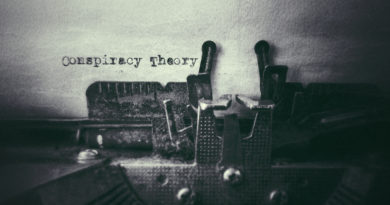The eternal Google search for truth

What colour is the sky? The ocean?
You might think the answer is obvious: they’re blue. Maybe not, though. Homer’s seas were “wine-dark”, and he never referred to the colour blue. He wasn’t unusual in this; most ancient texts don’t use the word. Exactly why this might be is a matter of some debate, but one explanation is that in ancient societies, blue was an unusual colour. Blue dyes came later; blue flowers are the result of selective breeding; blue animals are hardly common. Which leaves the sky and the sea, and maybe they’re better described as white, or grey, or wine-dark. So maybe people didn’t say “blue” back in the day, because the colour was so rare that it needed no label.
These days, we can do what Homer couldn’t: we can ask Google what colour the sky is. Problem solved? Not necessarily.
As the sociologist Francesca Tripodi explains, if you type “Why is the sky blue?” into a search box, you’ll get plenty of scientific explanations. (“Rayleigh scattering”, apparently.) But ask “why is the sky white?” and you may be told — as I was — that this is because of the scattering of light by large particles in the atmosphere. Ask “why is the sky red?” and you’ll be told: it’s Rayleigh scattering again. “Why is the sky green?” Possibly because a tornado is coming.
The colour of the sky is not what intrigues Tripodi. She is fascinated, instead, by the fact that when you turn to the internet for answers, much depends on your question. When you meet someone who announces, “I’ve done my own research”, it should be a statement to inspire confidence that here is a person who is diligent, curious and inquisitive. But it isn’t, because somehow people who do their own research have a habit of concluding that the sky is the colour of chemtrails.
Perhaps that is unfair. A few years ago, Tripodi closely observed and conversed with Republican voters in Virginia, and found that — contrary to what metropolitan liberals might assume — they were thoughtful citizens who spent considerable time and energy critically evaluating the news. Like former vice-president Mike Pence, these people were Christian, conservative and Republican in that order, and they applied their habitual practice of closely reading the Bible to closely reading the Constitution and congressional bills. They would “unpack” the meaning and cross-check with independent research. They were very far from the gullible caricatures who are said to have believed that Donald Trump’s presidential bid had been endorsed by the Pope.
Unfortunately, as Tripodi explains in her 2022 book The Propagandists’ Playbook, carefully checking facts and arguments with a Google search does not guarantee wisdom, objectivity or even exposure to contrary arguments. To pick a simple and fairly benign example, when NFL players started kneeling during the national anthem, Trump claimed that NFL ratings were down. Google “NFL ratings down” and you’d see confirmation from Trump-sympathising websites that he was right. Google “NFL ratings up” and you’d see a list of headlines from liberal websites claiming the opposite.
To avoid this problem, a truth-seeking citizen should systematically search for contrary views. But few people, from any part of the political spectrum, tend to do this. This is not because of crude partisanship, but a more subtle glitch in our logic modules.
In 1960, the psychologist Peter Wason published a striking study of this tendency. Subjects were shown a sequence of three numbers — 2, 4, 6 — and asked to guess what rule the sequence followed, then test that guess by coming up with other sequences of three. After each guess, subjects would be informed whether or not the new sequences fit the rule or not.
Wason found that people kept testing their guesses by producing sequences that matched the guess. They rarely produced counterexamples that might show their guess was wrong. For example, let’s say your guess was “a series of consecutive even numbers”, the next step should be to try to prove yourself wrong, with counterexamples such as “2, 8, 10” or “3, 5, 7”. But people would instead produce examples which fit their existing hypothesis, such as “6, 8, 10”.
In Wason’s study, the actual rule was broad: any three numbers in ascending order. To find that rule, you need to start listing sequences that might contradict it. Wason labelled this behaviour “confirmation bias”, a phrase that now stands for a broad spectrum of ways in which we notice and remember evidence which justifies our beliefs. That broader pattern contributes to political tribalism, and most of us are guilty of it in some form. The narrower original, however, is highly relevant to the search behaviour Tripodi observed: trying to check a fact by searching for the fact rather than by searching for something that might contradict it.
There is a further subtle obstacle to the quest for truth on Google: if you can induce people to search using unusual terms, they are likely to produce unusual results. Clever propagandists seed the conversation with oddly specific phrases — for example, “crisis actor” — and a search incorporating such phrases will uncover a rabbit-hole of conspiracy thinking. For a harmless demonstration, try searching for “Why is the sky wine-dark?” The results are fascinating, and Rayleigh scattering is not mentioned.
Tripodi argues that rightwing influencers are cleverer at using such tactics, but the problem is not limited to one part of the political conversation. If we want to figure out what’s true, we need to get into the habit of presuming we might be wrong — and looking for evidence of our own mistaken assumptions. I’d like to boast that that is how I always think, but it isn’t. I suspect I’m not alone.
Tim Harford’s children’s book, ‘The Truth Detective’ (Wren & Rook), is now available
Follow @FTMag on Twitter to find out about our latest stories first
This article has been archived for your research. The original version from Financial Times can be found here.


